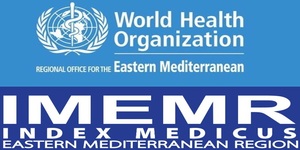Frequency of Parasitic, Bacterial and Fungal Enteropathogens among Children and Adults Patients with Diarrhea and Association Affecting Factors
DOI:
https://doi.org/10.36321/kjns.vi20143.2752Keywords:
diarrhea, enteropathogen, Entamoeba histolytica, mortality, ruralAbstract
Objective: The frequency of bacterial, parasitic and fungal enteropathogens among 596 children and adults patients who attended to Al-Sweara hospital and to health centers in Al-Sweara city were investigated. And the possibility of the influence of some factors such as residence, Sex and Age on the incidence variation of diarrhea and the diversity of its microbial etiology.
Methodology: the study achieved in the beginning of November 2013 until the end of September 2014 and involved 596 patients of both sexes and deferent ages, all stool samples were collected in sterile containers and conducting to macroscopic and microscopic examination and various laboratory tests to determine the type of the causative agent, whether parasitic or bacterial or fungal, also an informative questionnaire form was fill for each patient which included age, sex, place of residence and subjected these data for statistical analysis using spss.
Results: Total number of positive samples were 376(63%) of these 177 (47.07%) had parasitic etiology, of which Entamoeba histolytica was found in the majority of cases 100(26.5%) while Giardia lambila represent 77(20.4%). Bacteria represent 156(41.4%) which of 49(13.03%) were. Escherichia coli, 38(10.1%) were Salmonella species, 36(9.5%) were Shigella species and only 43(11.4) of the samples were positive for yeast. The majority of positive samples in this study 119(31.6) were under the 5 years. While the lost positive samples 44(11.7) mad up the 46 years old. Male members were affected more than the female, where are the infection percent in male was 200(53.1) while in female176 (46.8). The rate of positive samples was 143(23.9%)in urban. While the rate of positive sample was higher 233 (39%) in rural area.
Conclusion: The result of this study concluded that most of the causative agents of diarrhea in the subjected patients in Al-Sweara hospital and to health centers in Al-Sweara city are of parasitical origin, where Entamoeba histolytica ranks first followed by Giardia lambila and Escherichia. coli, SalmonellaSpp. and Shigella Spp. represented the bacterial etiology and Candeda albicans was the fungal cause.
Recommendations:- For future studies, we recommend further investigations such as: prevalence of various serotypes, electropherotypes and genomic analysis of enteropathogens, and ELISA methods for all patients with diarrhoea to identify the causative agent involved.
Downloads
Downloads
Published
How to Cite
Issue
Section
License
Copyright (c) 2015 Noor Ismeal Nasser

This work is licensed under a Creative Commons Attribution 4.0 International License.













